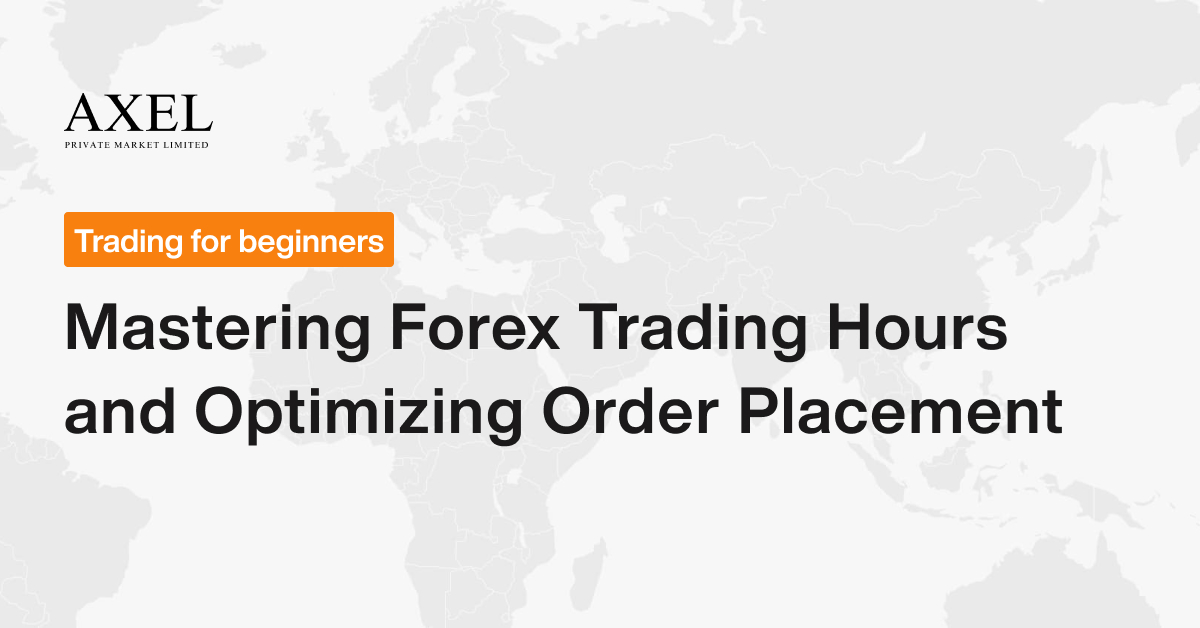Financial trading is a demanding field. It requires a thorough understanding of various indicators and strategies for success. One such prominent strategy is the Ichimoku Cloud. The term “Ichimoku Kinko Hyo” is Japanese. It means “one look equilibrium chart.” Traders use it to make decisions and predict future prices. This article explores the intricacies of the Ichimoku Cloud indicator. It explains how to use it to maximize success in trading.
ICHIMOKU CLOUD BASICS
Definition of Ichimoku Cloud (Base on Ichomoku cloud)
The Ichimoku Cloud is a technical analysis tool. It evaluates support and resistance levels, identifies trends, and gives trade signals. It finds extensive use in charting. It provides an all-encompassing view of the market. The cloud refers to the shaded space between the Ichimoku Cloud chart’s two lines.

History and Origin
In the late 1930s, Goichi Hosoda developed Ichimoku Cloud. It is also known as Ichimoku Kinko Hyo. The creators intended the term “one-look equilibrium chart” to provide a comprehensive insight into the market with a single glance.
Components of Ichimoku Cloud Chart
The Ichimoku Cloud comprises five components. These are Tenkan-sen, Kijun-sen, Chikou Span, and Senkou Span A and B. Each uses the highest and lowest prices.
Interpretation and Use the Ichimoku cloud
The interpretation of the Ichimoku Cloud is quite . If the price is above the cloud, the trend is upward, referring to a buy signal. , if the price falls below the cloud, it indicates a downward trend, which signals a sell.
Investment Implication
The Ichimoku Cloud plays a significant role in making investment decisions. It indicates potential buying and selling points. It allows traders to identify profitable instances and react.
The Importance of Technical Analysis
Technical analysis helps traders make educated guesses about future price movements. Traders use tools like Ichimoku Cloud. It simplifies market data and helps traders apply strategies more.
Popular Strategies Using Ichimoku Cloud
The most popular Ichimoku cloud trading strategies include the Bullish/Bearish Cross strategy. The Kumo Breakout strategy is popular. The Chikou Span strategy is also popular. The Senkou Span Cross-Strategy is popular. The Price Cross strategy is popular.
ICHIMOKU CLOUD INDICATORS
How to calculate the ichimoku cloud?
The Ichimoku Cloud indicator comprises five lines. Two of these lines make up the cloud area, with the space between them shaded.

The lines are calculated as follows:
-
Tenkan Sen (Conversion Line): A 9-period simple moving average calculated using the highest high and lowest low prices over the past 9 periods.
-
Kijun Sen (Base Line): A 26-period simple moving average calculated using the highest high and lowest low prices over the past 26 periods.
-
Senkou Span A (Leading Span A): The average of the Tenkan Sen and Kijun Sen.
-
Senkou Span B (Leading Span B): A 52-period simple moving average calculated using the highest high and lowest low prices over the past 52 periods.
-
Chikou Span (Lagging Span): The closing price plotted 26 periods in the past.
The cloud area is formed between the Senkou Span A and Senkou Span B lines. This provides a more simplified and readable description of the Ichimoku Cloud indicator formulas and components. Let me know if you need any part explained further.
(Tenkan-sen) (TenKan Conversion Line)
Tenkan-sen (Conversion Line) (E/A): The Tenkan-Sen (Tenkan) is a lead lag indicator. A blue line represents it. The calculation takes the average of the highest high and lowest low over the past 9 periods. This is 9 periods on daily charts or 9 bar/candlesticks. We plot the data over the past 26 periods. The Tenkan-Sen aims to identify short-term trends. It reacts quicker than other moving averages to changes in price, based on the data from 26 periods.
A crossover occurs when the price closes above the Tenkan-Sen. This shows an upward trend. In contrast, a close below signals a shift to a downward trend. Analysts analyze price data plotted over the past 26 periods to determine trends. We use this data to calculate the Tenkan-Sen.
Kijun sen (Base Line)
A red line plot represents the Kijun-Sen, which functions as a second lead/lag indicator. The calculation follows the same method as the Tenkan-Sen. But, for daily charts, it uses a longer period. Usually 26 periods. As a result, the Kijun-Sen responds slower to price changes. They say it identifies medium-term trends. The price is showing a bullish crossover when it closes above the Kijun-Sen. It indicates a bearish crossover when it closes below it. The distance and direction of crossover provide signals about trend strength.
Senkou Span A (Leading Span A)
Senkou Span A (Leading Span A) (E/A) is a basic indicator of future support and resistance. Traders consider it that way. A single lighter-colored line plots it. The calculation involves averaging the Tenkan-Sen and Kijun-Sen over the same 26-period period. This is 26 periods ahead. Senkou Span A leads price. It indicates potential support or resistance even before the price reaches those levels. When price closes above Senkou Span A, it gives a bullish signal.
Senkou Span B (Leading Span B)
Senkou Span B (Leading Span B) (E/A): Senkou Span B is the second component of the leading spans. Senkou Span A and represents the highest high and lowest lows from 26 periods ago graph it in the same color. Like Senkou Span A, Senkou Span B identifies potential future areas of support or resistance. A close above Senkou Span B reinforces the bullish view highlighted by a close above Span A.
Chikou Span (Lagging Span)
Chikou Span (Lagging Span) (E/A): The Chikou Span is often referred to as the ‘Lagging Span’ as it trails price action. Taking the closing price from 26 periods ago, we plot it as a single line. A close above the Chikou Span indicates bullish momentum. A close below signals the bears are in control. When the price stays in the same place as the Chikou Span, it confirms the trend is still happening.
STRATEGIES USING ICHIMOKU CLOUD
Bullish/Bearish Cross strategy
One of the most popular Ichimoku strategies analyzes crossovers between price and the leading and lagging lines. A bullish crossover occurs when the price closes above the cloud (defined by Senkou Span A and B). This signals a potential trend change to upward. A bearish crossover occurs when the price crosses below the cloud. This hints at downward momentum. Traders watch for these crossovers to enter long or short positions.
Kumo Breakout strategy
The Kumo breakout strategy involves watching for a decisive breakthrough of the Ichimoku cloud by the price. A sharp upward breakout through both Senkou Span lines implies that a bullish trend is accelerating. But, a downside breakout signals the bears have taken control. Traders enter trades in the direction of the breakout. They use the cloud as dynamic support and resistance.
Chikou Span strategy
This strategy analyzes the position of the Chikou Span in relation to the price. A closing above the span confirms bullish momentum. While a close below the span implies the bears are dominating. Traders can look for divergences between price action and the Chikou Span. They use these divergences as trading signals. For example, a higher high in price with a lower high in the span suggests an impending trend reversal.
Senkou Span cross-strategy
Some traders watch for crossovers between the two Senkou Span lines. Traders view a crossover where Span A crosses above Span B as a signal to enter long positions. Whereas a cross below signals a shift to bearish sentiment. The strength of the crossover is also examined based on the distance between the spans. Wider gaps imply stronger trend establishment or change.
Price cross strategy
The final strategy analyzes crossovers between the price and the various Ichimoku lines like the Tenkan-Sen and Kijun-Sen. Bullish crosses are signals to enter long trades. Bearish crosses are signals to enter short trades. Traders seek many confirmation crosses to improve signal accuracy.
PROS AND CONS OF ICHIMOKU CLOUD
Advantages of Ichimoku Cloud
One key benefit of the system is its simplicity. It condenses many data points into a single “cloud” that traders can interpret at a glance. This makes it suitable for benchmarking other trading methods. It also takes lagging, leading and current market behavior into account. Additionally, the indicator works well in trending and ranging markets. This is because it incorporates important support and resistance levels. Traders like its ability to signal trend changes in advance through leading measurements.
Disadvantages of Ichimoku Cloud
A potential drawback is that novices may find the system complex. This is due to the many lines and parameters involved. The many strategies also must large backtesting to determine optimal timeframe settings. Interpreting signals can be more difficult during periods of high volatility as well. Additionally, like most indicators, it relies on historical price data. It does not factor in unexpected news events. There may also be more false signals generated in choppy sideways markets.
Best scenarios for using Ichimoku Cloud
The strategy generally works best in markets experiencing clear trends. Leading measurements are more likely to provide reliable support/resistance levels. Currencies, commodities, and stock market indexes show confirmed trends over longer periods. They provide an ideal environment. Using it on smaller timeframes like hourly or daily charts can also help filter out some noise. Combining it with other confirming indicators may strengthen signals. Markets with stable uptrends or downtrends over the medium to long term offer the best conditions for the system. It can identify potential reversing signals in advance. This makes it useful for trend-following.
Worst scenarios for using Ichimoku Cloud
Choppy, ranging markets often have sharp reversals. These conditions are less ideal for the indicator system. The many lines may cross too without meaningful direction. Assets with low liquidity also produce more noise. Overly-optimized settings on lower timeframes may result in whipsaw signals. It is generally less suitable during periods with high event-driven volatility. This is because of news or earnings. Traders should not use the system in isolation. Instead, they should incorporate it as part of a holistic trading method.
Avoiding common mistakes
Traders should backtest different parameters to determine optimal settings for their strategies. They should also ensure signal consistency. Diversifying portfolio position sizing can limit risks. Avoiding reliance on a single indicator is also important. It’s important to place strict stops and avoid overtrading on premature signals. This protects capital. Combining it with confirmation from other technical or fundamental analysis tools may reduce the chances of false signals. You need patience, as some strategies may produce fewer but higher probability opportunities.
In summary, the system works best for trend-following. It works best over periods with clear directional moves. It works best when used alongside other analytical approaches. It’s part of a proven trading framework. Proper validation and risk management are crucial for success.
ICHIMOKU CLOUD IN FOREX TRADING
Forex Strategies with Ichimoku
The indicator’s components provide several strategies for Forex traders. The leading measurements can identify support/resistance zones for entries. A “green” crossover happens when the price line crosses above the trend line. This provides a short-term bullish signal. Meanwhile, a breakout above the upper line of the “cloud” area shows increasing momentum. It integrates well into range trading. Traders take long positions on bounces between the price line and the upper green line of the cloud.
Combining strategies adds confirmation. For example, a trader could look for a green crossover. They could also look for a breakout above the cloud. These two signals together give high confidence to go long. Backtesting different currency pairs and timeframes helps optimize the indicator. It also helps identify the most profitable signals. For example, green crossovers in an uptrend.
Pairing Ichimoku with other indicators in Forex
The system works best as part of a confluence approach. Pairing it with momentum indicators like MACD provides more validation of trends. Comparing its signals to moving averages adds confirmation. Integrating oscillators helps determine overbought/oversold levels for retracement plays. Using it alongside economic news/data flowfilters noise. Blending fundamental analysis on pairs provides context. Correlations between strategies and currencies strengthen signal quality.
Currency Pair selection for Ichimoku
More liquid major currency pairs have stable trends, lower spreads, and dependable structures. They are better candidates. Pairs involving USD, EUR, GBP, JPY, CHF often have well-defined boundaries. Commodity currencies can present attractive trending plays. But, exclude volatile EM pairs prone to extreme moves on weak fundamentals. Focusing the system on suitable pairs enhances signals and position management.
Ichimoku and Forex trends
Identifying trends is a core use as components interact to recognize momentum builds. The leading measurements forecast levels. Price action confirming lines signals trend strength. Reliable signals emerge from breakouts/bounces between areas. Maintaining positions in trends maximizes profit targets. Avoiding counter-trends and ranging periods limits losses.
Forex market prediction with Ichimoku
Combining signals from the system with an economic calendar filters short-term volatility. Analyzing impacts of scheduled news assists risk/reward assessments. Predicting spikes/flow from updates helps offset moves. Correlating its historical outputs and financial releases aids forecasting. Outlook studies on macro-trends provide directional biases for currencies to trade.
ICHIMOKU CLOUD IN STOCK MARKET TRADING
Stock Strategies with Ichimoku
The indicator provides many approaches for traders. Crossovers identify uptrends and downtrends. Breakouts from the “cloud” area signal momentum surges. It integrates into range trading between lines. Backtesting helps optimize strategies per stock. Components interact to recognize developing trends.
Pairing Ichimoku with Other Indicators in the Stock Market
The system collaborates well as part of a conjunction technique. Pairing it with momentum gauges augments trend validation. Comparing its signals to moving averages adds affirmation. Integrating oscillators aids determining overbought/oversold levels. Using it alongside corporate reporting filters turbulence. Combining metrics strengthens signal quality.
Stock selection for Ichimoku
Large-cap stocks with decent liquidity, tighter spreads and established structures are preferable. Industry leaders often have transparent boundaries. Commodity plays may present attractive trend chances. Excludevolatile penny stocks prone to disproportionate moves. Focusing the approach on fitting stocks improves signal management.
Ichimoku and Stock Market Trends
Flagging trends is a fundamental utility as parts interact to recognize momentum builds. The leading metrics forecast support and resistance. Price activity ratifying lines signals force. Reliable cues emerge from breakouts/bounces between areas. Maintaining positions in trends maximizes profit targets.
Stock Market Prediction with Ichimoku
Merging signals from the approach with an economic agenda filters short-term unpredictability. Assessing probable impacts of scheduled news assists risk/reward evaluations. Predicting spikes/flow from updates helps counter moves. Correlating past outputs and company reports aids forecasting. Macro trends studies provide directional biases.
ICHIMOKU CLOUD IN CRYPTOCURRENCY TRADING
Cryptocurrency strategies with Ichimoku
The indicator provides many approaches. Crossovers identify uptrends and downtrends. Breakouts from the “cloud” area signal momentum surges. It integrates into range trading between lines. Backtesting different coins helps optimize strategies. Components interact to recognize developing trends.
Pairing Ichimoku with other indicators in Cryptocurrency
The system works well as part of a combined method. Pairing it with momentum gauges augments trend validation. Comparing its signals to moving averages adds confirmation. Integrating oscillators aids determining overbought/oversold levels. Using it alongside network data filters volatility. Combining metrics strengthens signal quality.
Cryptocurrency selection for Ichimoku
More established coins with decent liquidity, tighter spreads and defined structures are preferable. Industry leaders often have transparent boundaries. Exploratory altcoins may present attractive trend opportunities. Exclude speculative options prone to disproportionate moves. Focusing on suitable coins improves signal management.
Ichimoku and Cryptocurrency trends
Flagging trends is fundamental as components interact to identify developing momentum. The leading measurements forecast support and resistance. Price action ratifying lines signals trend strength. Reliable signals emerge from breakouts between areas. Maintaining positions in trends maximizes profit targets.
Risk Management Strategies for Cryptocurrency Traders using the Technical Indicator System
Due to volatility, risk management is key. Strategies include strict stop losses and limiting position sizes based on account equity. Traders also check the risk/reward of trades. They also hedge positions and diversify across coins and strategies. The system should be one part of an disciplined trading plan.
In summary, the indicator system provides trading opportunities. Suitable cryptocurrency assets apply it. It’s best to pair it with confirmation from other indicators. This is part of a well-designed risk management framework.
CONCLUSION
Recap of Key Insights
In summary, the indicator system provides a flexible and clear approach to technical analysis. It is also integrated. The components analyze both short-term price action and longer-term trends. They measure the lagging, leading, and current markets. Studying crossovers, breakouts, divergences, and correlations between lines can yield many trading strategies. We must backtesting to optimize it for specific tradable instruments and market conditions.
Balanced Approach in Application
The indicator works best as part of a broader analytical framework, not as a standalone tool. Pair it with other indicators. Use fundamental analysis and risk management techniques to confirm signals. No single indicator can predict the market, so balance is important. Traders need to be aware of its limitations in volatile or ranging markets.
Continuous Learning and Adaptation
-
Steve Nison, an Ichimoku expert, is known for advancing the indicator’s trading applications. He explains the theoretical and mathematical basis of each component.
-
The sources cite research from academic journals like the Journal of Behavioral Finance. They test the system’s efficacy over decades of market data. They analyze how the system performed in different market cycles of the past.
-
Companies like Bloomberg and TradingView have integrated the indicator into their professional platforms. They are updating or improving it based on trader demand. They are also monitored by other traders.
-
Traders in Investopedia discussions suggest experimenting with different timeframes and asset classes. Experienced authors like John Carter recommend this too. This can help expand applicable strategies.
-
We compared the indicator’s signals to outcomes from third-party evaluations. These evaluations came from sources like Technical Analysis of Stocks and Commodities Magazine. The magazine has published market reviews for over 30 years.
-
Industry events bring together expert practitioners. For example, the Market Technicians Association’s annual symposium. We incorporate new techniques discussed at these events.
-
Staying informed by groups on trading forums like Reddit’s r/Daytrading and StockTwits. They share enhancement ideas supported with evidence from their verifiable trading histories.





